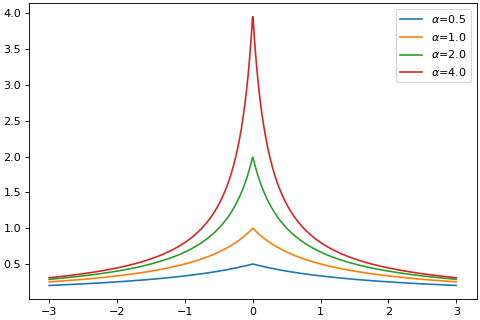brainpy.math.surrogate.erf#
- brainpy.math.surrogate.erf(x, alpha=1.0)[source]#
Judge spiking state with an erf function [1] [2] [3].
If origin=False, computes the forward function:
\[\begin{split}g(x) = \begin{cases} 1, & x \geq 0 \\ 0, & x < 0 \\ \end{cases}\end{split}\]If origin=True, computes the original function:
\[\begin{split}\begin{split} g(x) &= \frac{1}{2}(1-\text{erf}(-\alpha x)) \\ &= \frac{1}{2} \text{erfc}(-\alpha x) \\ &= \frac{1}{\sqrt{\pi}}\int_{-\infty}^{\alpha x}e^{-t^2}dt \end{split}\end{split}\]Backward function:
\[g'(x) = \frac{\alpha}{\sqrt{\pi}}e^{-\alpha^2x^2}\]>>> import brainpy as bp >>> import brainpy.math as bm >>> import matplotlib.pyplot as plt >>> bp.visualize.get_figure(1, 1, 4, 6) >>> xs = bm.linspace(-3, 3, 1000) >>> for alpha in [0.5, 1., 2., 4.]: >>> grads = bm.vector_grad(bm.surrogate.nonzero_sign_log)(xs, alpha) >>> plt.plot(xs, grads, label=r'$\alpha$=' + str(alpha)) >>> plt.legend() >>> plt.show()
(
Source code,png,hires.png,pdf)
- Parameters:
- Returns:
out – The spiking state.
- Return type:
jax.Array
References
